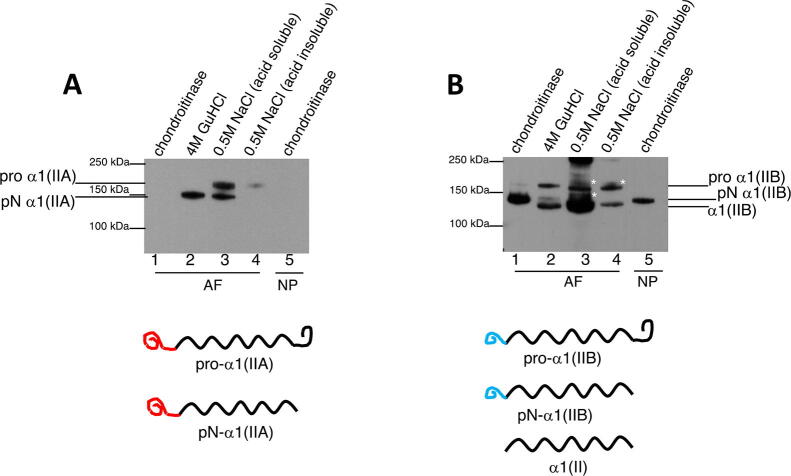Biochemical and immuno-histochemical localization of type IIA procollagen in annulus fibrosus of mature bovine intervertebral disc
Abstract
For next generation tissue-engineered constructs and regenerative medicine to succeed clinically, the basic biology and extracellular matrix composition of tissues that these repair techniques seek to restore have to be fully determined. Using the latest reagents coupled with tried and tested methodologies, we continue to uncover previously undetected structural proteins in mature intervertebral disc. In this study we show that the “embryonic” type IIA procollagen isoform (containing a cysteine-rich amino propeptide) was biochemically detectable in the annulus fibrosus of both calf and mature steer caudal intervertebral discs, but not in the nucleus pulposus where the type IIB isoform was predominantly localized. Specifically, the triple-helical type IIA procollagen isoform immunolocalized in the outer margins of the inner annulus fibrosus. Triple helical processed type II collagen exclusively localized within the inter-lamellae regions and with type IIA procollagen in the intra-lamellae regions. Mass spectrometry of the α1(II) collagen chains from the region where type IIA procollagen localized showed high 3-hydroxylation of Proline-944, a post-translational modification that is correlated with thin collagen fibrils as in the nucleus pulposus. The findings implicate small diameter fibrils of type IIA procollagen in select regions of the annulus fibrosus where it likely contributes to the organization of collagen bundles and structural properties within the type I-type II collagen transition zone.




 求助内容:
求助内容: 应助结果提醒方式:
应助结果提醒方式:


